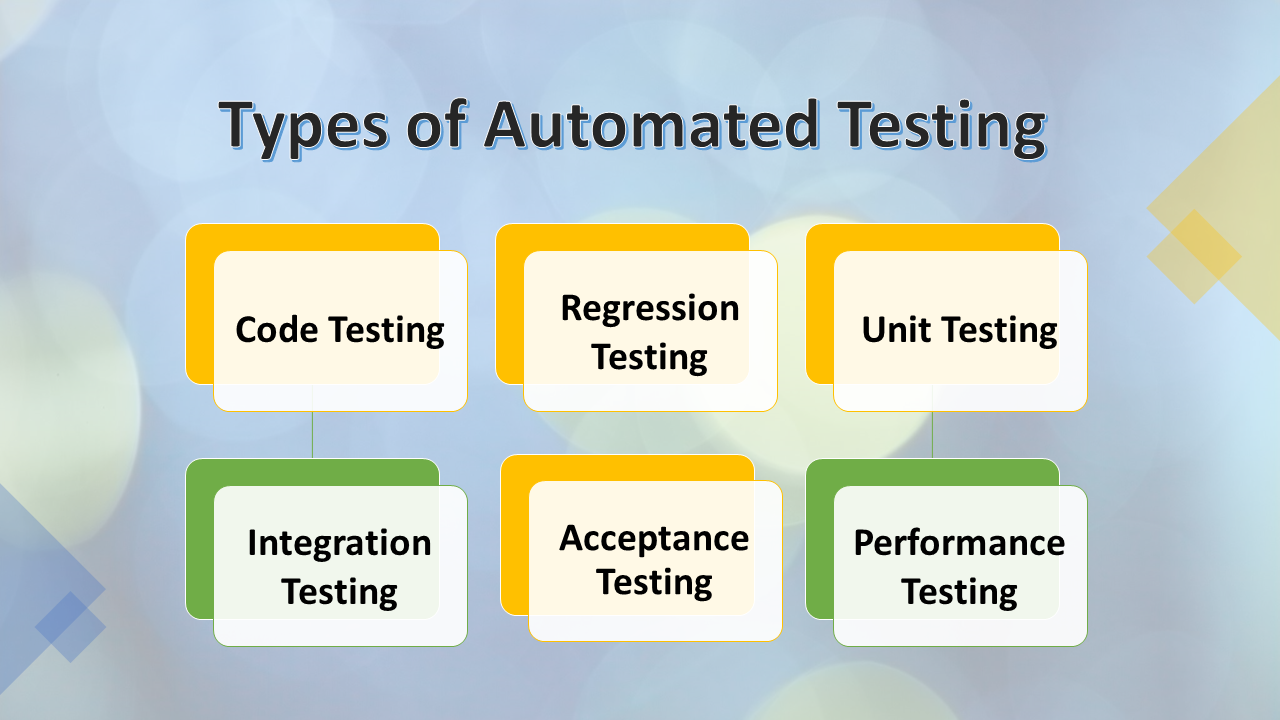Exploring the Future of Automation Testing in Software Program Development
Exploring the Future of Automation Testing in Software Program Development
Blog Article
Unlocking the Power of Automation Evaluating: Ideal Practices, Devices, and Methods to Simplify Your Screening Refine
Automation testing has come to be a foundation in contemporary software application advancement techniques, supplying a myriad of benefits such as increased performance, faster time-to-market, and improved total high quality (automation testing). The course to utilizing the power of automation testing is led with insights and methods that can reinvent exactly how software is tested and supplied.
Importance of Automation Checking
Automation screening plays a crucial duty in contemporary software development by improving effectiveness, decreasing human mistake, and ensuring the top quality of software products. Executing automation testing enables the implementation of recurring test instances, regression testing, and efficiency testing in a much more reliable and effective way. By automating these processes, software program development groups can save time and resources that would or else be invested in hands-on testing.
Moreover, automation testing significantly minimizes the likelihood of human mistake, as the examinations are executed regularly and exactly each time they are performed. This uniformity results in more reputable outcomes and helps recognize problems early in the growth procedure. Furthermore, automation screening facilitates constant integration and continuous distribution techniques by supplying rapid feedback on the quality of the software application product.
Best Practices for Automation Screening
Efficiently implementing automated testing techniques can substantially boost the general high quality and dependability of software. To make sure successful automation screening, it is essential to comply with ideal methods that streamline the screening process and optimize its efficiency.
First of all, it is necessary to meticulously plan and plan the automation method. This involves determining the appropriate test instances for automation, establishing clear goals, and establishing practical assumptions. Prioritizing tests based on important performances and potential effect on the software is crucial to optimizing automation initiatives.
Secondly, maintaining a robust and scalable examination automation framework is essential for long-term success (automation testing). Utilizing reusable and modular examination scripts, applying proper variation control, and regularly updating test cases to reflect adjustments in the software application are basic facets of a sustainable automation approach
In addition, including continual integration techniques right into the automation procedure assists in detecting issues early and making certain seamless collaboration among staff member. By adhering to these best practices, companies can take advantage of automation testing to accomplish higher performance, enhanced software application quality, and faster time-to-market.
Important Tools for Automation Testing
Having actually developed a strong structure with ideal methods for automation screening, the next vital action is to determine and make use of the essential tools necessary for effective test automation. These tools play an essential role in simplifying the testing procedure, increasing productivity, and making certain the high quality of software program applications.

For efficient test monitoring and cooperation, tools like Jira, TestRail, or HP ALM can help in arranging test situations, tracking problems, and facilitating communication amongst employee. In addition, efficiency screening tools like JMeter or LoadRunner are vital for evaluating the scalability and security of applications under varying load problems. By leveraging these crucial tools, organizations can improve their automation screening capacities and attain faster time-to-market with top quality software.
Approaches for Enhancing Evaluating Process
To maximize the screening procedure and enhance overall performance, calculated planning and precise execution are extremely important in attaining streamlined screening procedures (automation testing). One efficient technique for streamlining the screening process is to check it out prioritize test cases based upon their impact and regularity of usage. By concentrating on high-impact test instances that cover vital functionalities and are frequently made use of by end-users, teams can designate resources extra efficiently and make sure that the most vital aspects of the application are extensively examined
Additionally, executing a risk-based screening strategy can aid improve the screening process by prioritizing and recognizing test situations based upon potential threats to the application. By examining the influence and possibility of different threats, screening get redirected here efforts can be directed towards areas of the application that are most at risk to failure, hence making best use of the effectiveness of the testing process.
Additionally, developing clear interaction networks and cooperation between cross-functional groups can assist in the sharing of details, needs, and feedback, causing an extra streamlined and collaborated screening procedure. By cultivating a society of openness and collaboration, teams can work together a lot more properly towards accomplishing typical testing goals and goals.
Optimizing Performance With Automation

Collaborating very closely with growth teams to incorporate automated screening into the constant integration/continuous deployment (CI/CD) pipeline can streamline the screening process and promote faster comments loopholes for quicker issue resolution. By leveraging automation properly, screening teams can significantly enhance efficiency and supply top quality software application options efficiently.
Final Thought
In conclusion, automation testing plays a vital function in streamlining the screening process, enhancing effectiveness, and making certain the quality of software application applications. By implementing finest techniques, utilizing necessary tools, and strategizing to maximize effectiveness, organizations can unlock the power of automation testing. It is important to prioritize automation testing in software program advancement to accomplish faster distribution, greater quality products, and total success in the digital landscape.
Executing automation screening enables for the implementation of repeated test instances, regression screening, and performance screening in an extra efficient and dependable manner.To enhance the testing procedure and improve total effectiveness, critical preparation and meticulous execution are paramount in attaining structured testing operations.Building upon the structure of calculated preparation and thorough execution in enhancing the testing process, the following key focus is on utilizing automation to make best use of screening performance. Teaming up carefully with growth groups to integrate automated screening right view into the continual integration/continuous release (CI/CD) pipe can simplify the screening process and help with faster comments loops for quicker problem resolution.In verdict, automation screening plays an essential role in streamlining the screening process, enhancing efficiency, and guaranteeing the high quality of software program applications.
Report this page